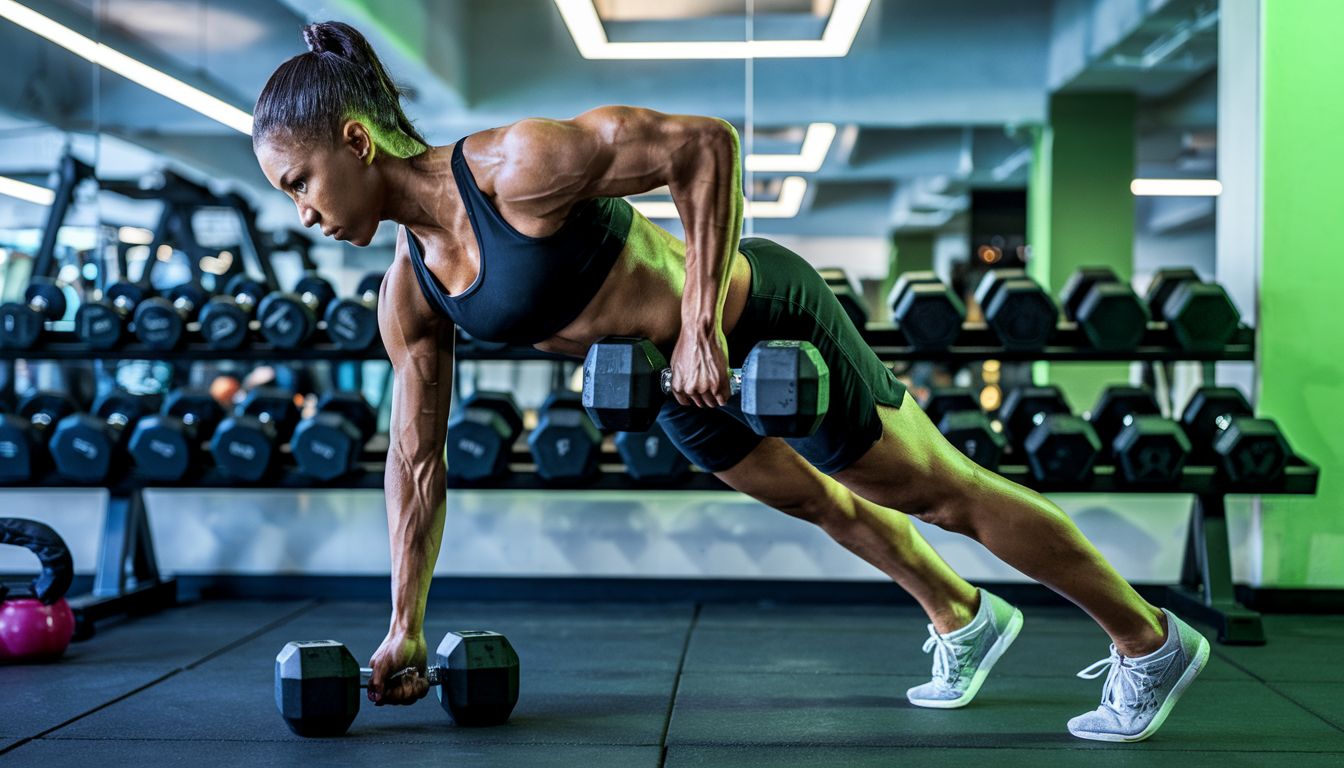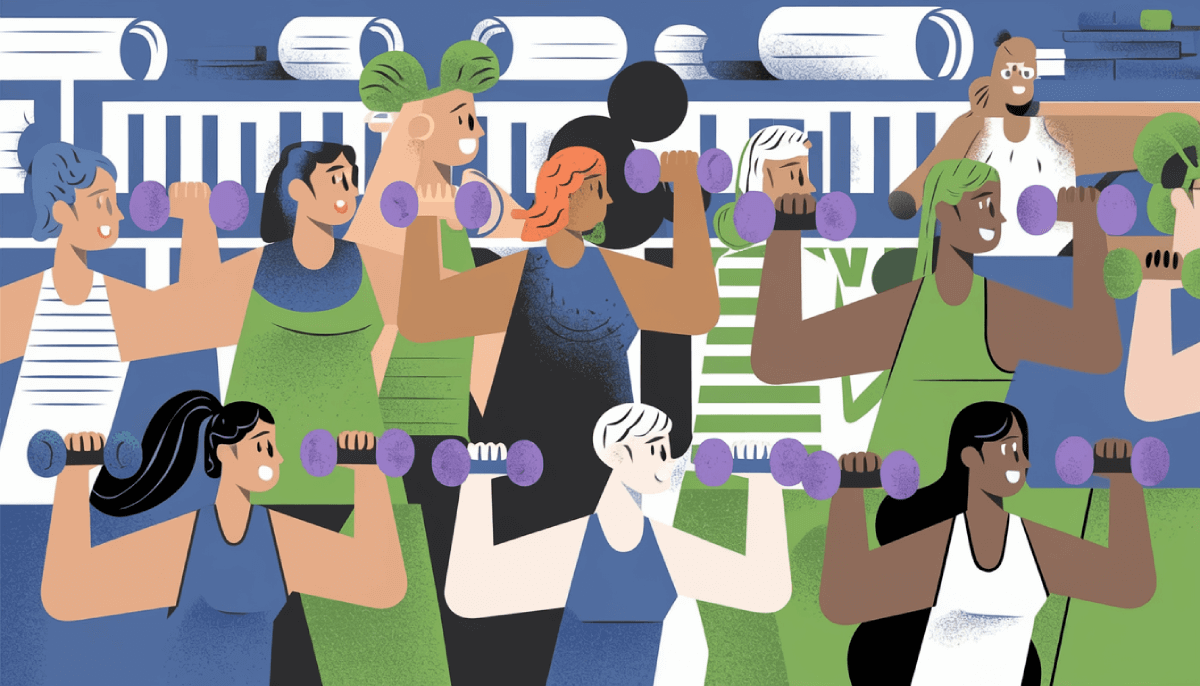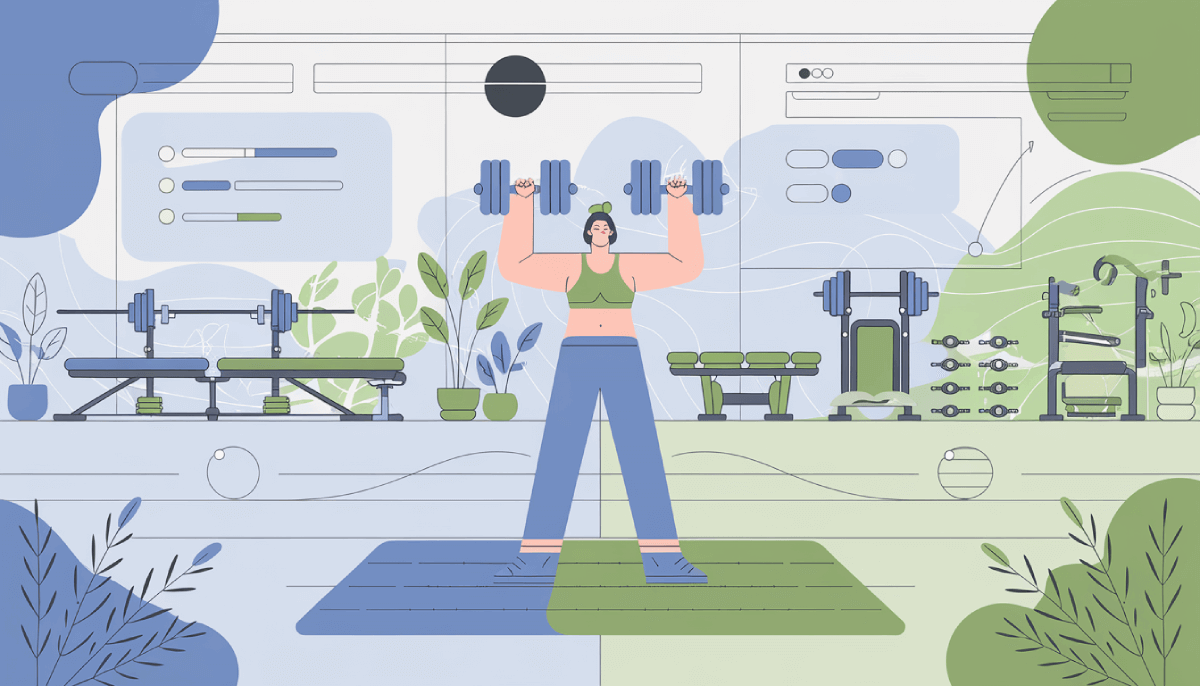Welcome to your ultimate guide on achieving a full body workout with dumbbells. Whether you’re new to fitness or a seasoned enthusiast, dumbbell exercises offer a range of benefits that can help you achieve your health and fitness goals.
Full body workouts are designed to engage multiple muscle groups, providing a comprehensive fitness routine. Using dumbbells in these workouts adds an extra layer of versatility and convenience. You can perform a wide variety of exercises with just a few sets of dumbbells, making them perfect for home workouts.
Before diving into your workout, it’s crucial to understand the importance of proper technique and nutrition. Good form helps prevent injuries and ensures that you get the most out of each exercise. Pairing your workouts with a balanced diet will also enhance your results, aiding in muscle recovery and growth.
Benefits of Full Body Workouts with Dumbbells
Full body workouts with dumbbells offer numerous advantages for both your physical and mental well-being. Here are some key benefits:
- Improved Strength and Muscle Tone: Working out with dumbbells targets multiple muscle groups, helping you build a balanced and toned physique.
- Enhanced Cardiovascular Health: Full body workouts can elevate your heart rate, improving cardiovascular health and endurance.
- Mental Health Benefits: Regular exercise releases endorphins, which can help reduce stress and improve your mood.
- Convenience and Versatility: Dumbbells are easy to store and can be used for a wide range of exercises, making them ideal for home workouts.
For more information on the health benefits of regular physical activity, check out this article from the Mayo Clinic: Exercise: 7 benefits of regular physical activity – Mayo Clinic.
Essential Equipment for Dumbbell Workouts
To get started with a full body workout with dumbbells, you need the right equipment. Here are some essentials:
- Variety of Dumbbells: Having a range of weights allows you to target different muscle groups and progress over time. Beginners might start with lighter weights, while advanced users can use heavier ones. For more on the benefits of strength training, visit 14 Benefits of Strength Training.
- Workout Mat: A good mat provides cushioning and support, especially for floor exercises.
- Bench (Optional): A workout bench can add versatility to your routine, allowing for exercises like the dumbbell bench press.
When selecting dumbbells, consider your fitness level. For expert opinions on whether dumbbells are worth it, check out Are Dumbbells Worth It? Experts Weigh In.
Proper Technique for Dumbbell Exercises
Using the correct form is crucial for avoiding injuries and getting the most out of your workouts. Here are some basic guidelines for safe and effective dumbbell use:
- Maintain Good Posture: Keep your back straight, shoulders back, and core engaged.
- Controlled Movements: Avoid swinging the weights. Lift and lower them in a controlled manner.
- Breathe Properly: Exhale when lifting the weight and inhale when lowering it.
- Warm Up: Always start with a warm-up to prepare your muscles and joints for the workout.
For more detailed tips on proper technique, you can refer to the Mayo Clinic’s guide on weight training do’s and don’ts.
Full Body Dumbbell Workout Routine
A well-rounded full body workout with dumbbells should include exercises that target all major muscle groups. Here’s a step-by-step guide to help you get started:
Warm-Up Exercises
- Dynamic stretches: Perform leg swings, arm circles, and hip rotations to loosen up your muscles.
Upper Body
- Dumbbell Bench Press: Lie on a bench with a dumbbell in each hand. Press the weights up until your arms are fully extended, then lower them back down. Aim for 3 sets of 10-12 reps.
- Shoulder Press: Stand or sit with a dumbbell in each hand at shoulder height. Press the weights overhead until your arms are straight, then lower them back down. Perform 3 sets of 10-12 reps.
- Bicep Curls: Stand with a dumbbell in each hand, palms facing forward. Curl the weights up to your shoulders, then lower them back down. Do 3 sets of 12-15 reps.
Lower Body
- Dumbbell Squats: Hold a dumbbell in each hand at your sides. Squat down as if sitting in a chair, then stand back up. Complete 3 sets of 12-15 reps.
- Lunges: Hold a dumbbell in each hand and step forward into a lunge position. Push back to the starting position and switch legs. Perform 3 sets of 10-12 reps per leg.
- Deadlifts: Hold a dumbbell in each hand in front of your thighs. Bend at the hips and lower the weights to the ground, then return to standing. Aim for 3 sets of 10-12 reps.
Core
- Dumbbell Russian Twists: Sit on the floor with your knees bent, holding a dumbbell with both hands. Lean back slightly and twist your torso to each side. Do 3 sets of 15-20 reps per side.
- Weighted Sit-Ups: Lie on your back with your knees bent and hold a dumbbell against your chest. Perform sit-ups, lifting your upper body towards your knees. Complete 3 sets of 12-15 reps.
Cool-Down Exercises
- Static stretches: Hold each stretch for 20-30 seconds to help your muscles recover.
- Deep breathing: Spend a few minutes focusing on deep, slow breaths to relax your body.
Tips for Maximizing Full Body Workouts
To get the most out of your full body workout with dumbbells, consider these tips:
Consistency and Progression
- Stick to a regular workout schedule, aiming for at least 3-4 sessions per week. For a weekly workout plan, visit Weekly Dumbbell Workout.
Balancing Workout Intensity and Recovery
- Ensure you have rest days to allow your muscles to recover and grow.
Tracking Progress and Setting Realistic Goals
- Keep a workout journal to track your exercises, weights, and reps.
- Set achievable goals and celebrate your progress to stay motivated.
Nutrition for Optimal Workout Results
Nutrition plays a crucial role in achieving your workout goals. Whether you’re aiming to build muscle, lose weight, or simply stay fit, what you eat can make a significant difference. Here are some key points to consider:
- Protein: Essential for muscle repair and growth. Include sources like chicken, fish, eggs, and plant-based proteins.
- Carbohydrates: Provide energy for your workouts. Opt for complex carbs like whole grains, fruits, and vegetables.
- Fats: Necessary for overall health. Choose healthy fats like avocados, nuts, and olive oil.
- Hydration: Drink plenty of water before, during, and after your workouts to stay hydrated.
- Vitamins and Minerals: Ensure you’re getting a balanced intake of essential nutrients to support your body’s functions.
For more detailed nutritional advice, check out this comprehensive guide on how to gain muscle.
Common Mistakes to Avoid
To get the most out of your full body workout with dumbbells, it’s important to avoid some common pitfalls:
- Overtraining: Your body needs time to recover. Overdoing it can lead to injuries and burnout. Aim for a balanced routine with rest days.
- Incorrect Form: A balanced diet is essential for muscle growth and recovery. Don’t overlook the importance of proper nutrition.
By avoiding these mistakes, you’ll be on your way to a safer and more effective workout routine. For more tips and information, visit Dumbbells.com.




